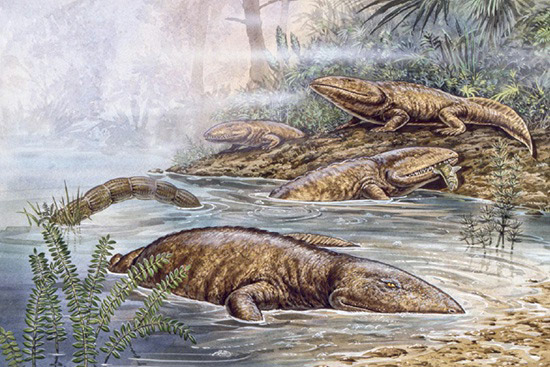Around 550 million years ago, during the Cambrian Explosion, a significant diversification in complex multicellular life occurred, leading to the evolution of the first vertebrates. These early vertebrates were primarily filter feeders without jawbones. The Devonian period, approximately 420 to 360 million years ago, marked the advent of jawed fish.
A pivotal moment in evolutionary history was the emergence of the first tetrapods, four-limbed amphibious vertebrates, from specific lobe-finned fishes in the Devonian. These tetrapods, using primitive legs, were able to swim in oceans and move on land. A notable tetrapod fossil, Ichthyostega, believed to be among the first to walk on land about 375 million years ago, likely inhabited swampy or shallow-water environments. Despite its limitations on land due to its hefty build and short legs, Ichthyostega’s ability to breathe air using lungs was a significant evolutionary step.
The transition from fish to tetrapod amphibians remains a hotly debated topic among evolutionary biologists, with ongoing research and fossil discoveries expected to shed light on this transformative phase. This evolutionary journey, which led lobe-finned fish to develop legs and adapt to terrestrial life, had profound implications for Earth’s biodiversity. Over the following millions of years, the success of tetrapods gave rise to specialized subclasses, including amphibians, reptiles, and mammals, shaping the course of life on Earth.

